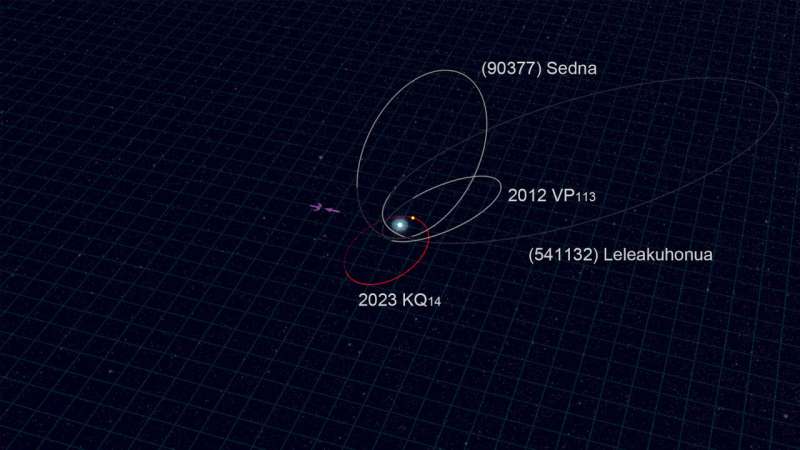
The Subaru Telescope has identified a significant celestial body beyond Pluto, designated as 2023 KQ 14. This discovery, part of the FOSSIL (Formation of the Outer Solar System: An Icy Legacy) project, offers new insights into the evolution and structure of the outer solar system. The findings were published in the journal Nature Astronomy and were based on observations made in March, May, and August of 2023.
The object’s discovery involved extensive follow-up observations conducted in July 2024 using the Canada-France-Hawaii Telescope. By analyzing historical data from various observatories, astronomers were able to trace the orbit of 2023 KQ 14 over a period of 19 years. Its unusual distant orbit has classified it as a “sednoid,” making it only the fourth known example of this rare category of celestial objects.
Implications of the Discovery
Numerical simulations carried out by the FOSSIL team, some utilizing the computing power of the National Astronomical Observatory of Japan, suggest that 2023 KQ 14 has maintained a stable orbit for at least 4.5 billion years. While its current orbit differs from those of other known sednoids, the simulations indicate that their orbits shared similarities approximately 4.2 billion years ago. This divergence points to a more complex and diverse outer solar system than previously understood.
Dr. Yukun Huang, who led the orbital simulations, noted the implications of this discovery for the ongoing search for a hypothetical ninth planet in the solar system. “The fact that 2023 KQ 14’s current orbit does not align with those of the other three sednoids lowers the likelihood of the Planet Nine hypothesis. It is possible that a planet once existed in the solar system but was later ejected, causing the unusual orbits we see today,” he stated.
Understanding the Outer Solar System
The significance of 2023 KQ 14 extends beyond its classification as a sednoid. Dr. Fumi Yoshida emphasized that the object was found in a region where Neptune’s gravitational influence is minimal. This discovery suggests extraordinary events during the ancient era when 2023 KQ 14 formed. “Understanding the orbital evolution and physical properties of these unique, distant objects is crucial for comprehending the full history of the solar system,” he explained.
The Subaru Telescope remains one of the few telescopes on Earth capable of making such discoveries. As the FOSSIL project continues its work, there is hope that further findings will help create a more comprehensive picture of the solar system’s formation and evolution.
For more detailed information, refer to the article by Ying-Tung Chen et al in Nature Astronomy, DOI: 10.1038/s41550-025-02595-7. The ongoing research not only enhances scientific understanding but also fuels public interest in the mysteries of our cosmic neighborhood.






